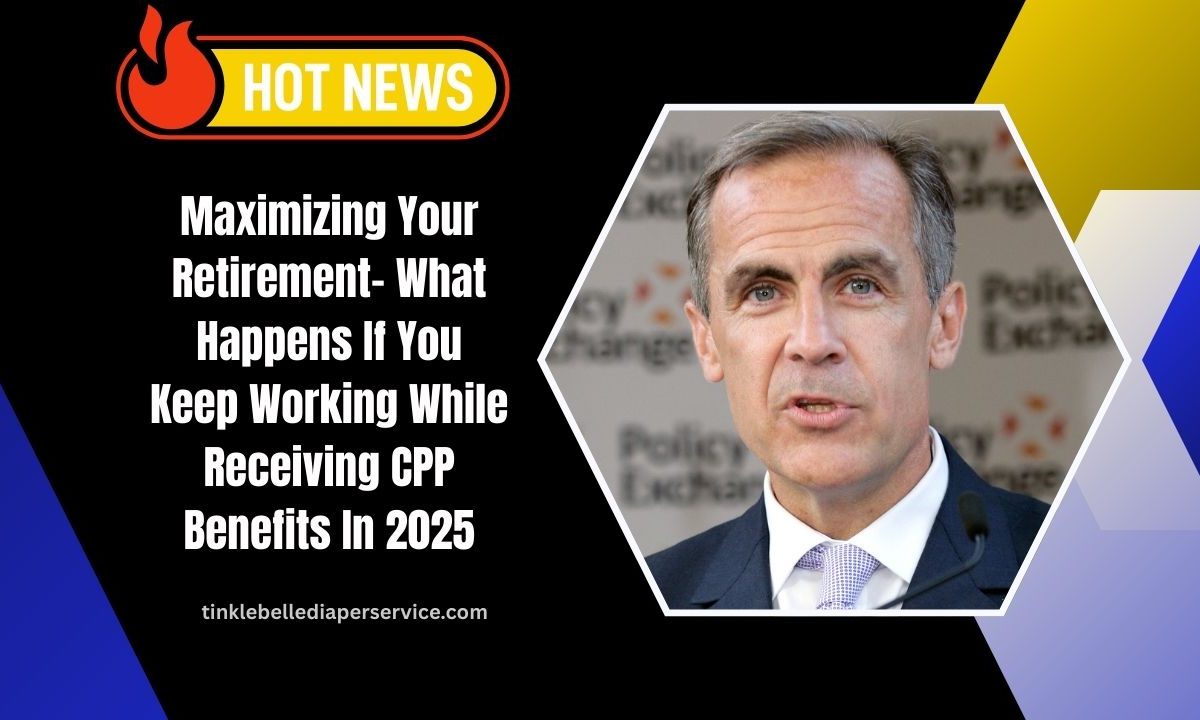Navigating retirement while continuing to work can be complex, especially when it comes to understanding the implications for your Canada Pension Plan (CPP) benefits.
As of 2025, there are specific rules and benefits associated with working while receiving Canada Pension Plan. This article provides a comprehensive overview to help you make informed decisions about your retirement and employment.
Understanding CPP Contributions While Working
The Canada Pension Plan (CPP) is a contributory, earnings-related social insurance program that provides retirement, disability, and survivor benefits. Contributions to the Canada Pension Plan are mandatory for individuals aged 18 and over who earn more than $3,500 annually.
Both employees and employers contribute equally, while self-employed individuals pay both portions.
In 2025, the Canada Pension Plan contribution rate remains at 5.95% for both employees and employers, up to the maximum annual pensionable earnings (YMPE) of $71,300.
This results in a maximum annual contribution of $4,034.10 each for employees and employers. Self-employed individuals contribute 11.90%, totaling a maximum of $8,068.20 annually.
Additionally, the second additional Canada Pension Plan contribution (CPP2) applies to earnings between the YMPE and the year’s additional maximum pensionable earnings (YAMPE), which is $81,200 in 2025.
The CPP2 rate is 4.00% for employees and employers, resulting in a maximum contribution of $396.00 each. Self-employed individuals contribute 8.00%, totaling $792.00.
Working While Receiving CPP Benefits
You can continue to work while receiving your Canada Pension Plan retirement pension. The rules for CPP contributions while working and receiving benefits vary based on your age:
- Ages 60 to 64: Contributions are mandatory. These contributions will increase your retirement income through the Post-Retirement Benefit (PRB).
- Ages 65 to 70: Contributions are optional. If you choose to continue contributing, you must complete Form CPT30 and submit it to both your employer and the Canada Revenue Agency (CRA).
- Age 70 and above: You cannot contribute to the Canada Pension Plan, even if you continue working.
Post-Retirement Benefit (PRB)
The Post-Retirement Benefit (PRB) is a lifetime benefit that increases your Canada Pension Plan retirement income.
Each year you contribute to the Canada Pension Plan while receiving your retirement pension, you earn a PRB, which is added to your monthly CPP payment the following year. This benefit is indexed to inflation and continues for life.
CPP Contribution Rates and Maximums for 2025
| Category | Rate (%) | Maximum Earnings | Maximum Contribution |
|---|---|---|---|
| Employee/Employer (Canada Pension Plan) | 5.95 | $71,300 | $4,034.10 each |
| Self-Employed (Canada Pension Plan) | 11.90 | $71,300 | $8,068.20 |
| Employee/Employer (CPP2) | 4.00 | $81,200 | $396.00 each |
| Self-Employed (CPP2) | 8.00 | $81,200 | $792.00 |
Tax Implications
Canada Pension Plan benefits are considered taxable income. If you continue working while receiving Canada Pension Plan, your total income may place you in a higher tax bracket.
It’s important to plan accordingly and consider consulting a tax professional to understand the implications for your specific situation.
Impact on Other Benefits
Working while receiving Canada Pension Plan benefits may affect other government programs:
- Old Age Security (OAS): If your income exceeds a certain threshold, you may be subject to the OAS recovery tax, which requires you to repay part or all of your OAS pension.
- Guaranteed Income Supplement (GIS): Additional income from working may reduce or eliminate your eligibility for GIS, which is intended for low-income seniors.
Continuing to work while receiving CPP benefits can enhance your retirement income through additional contributions and the Post-Retirement Benefit.
However, it’s essential to understand the rules based on your age, the impact on taxes, and how it may affect other benefits.
Careful planning and consultation with financial advisors can help you make the most of your retirement years.
FAQs
Can I work while receiving Canada Pension Plan retirement benefits?
Yes, you can work while receiving CPP retirement benefits. Depending on your age, you may be required or have the option to continue contributing to the Canada Pension Plan, which can increase your retirement income through the Post-Retirement Benefit.
How do I stop contributing to Canada Pension Plan after age 65?
To stop contributing to the CPP after age 65, you must complete Form CPT30 and submit it to both your employer and the Canada Revenue Agency (CRA). This election is optional and can be changed once per calendar year.
Will working while receiving CPP affect my Old Age Security (OAS) benefits?
Possibly. If your income exceeds a certain threshold, you may be subject to the OAS recovery tax, which requires you to repay part or all of your OAS pension. It’s important to monitor your income levels to understand the impact on OAS benefits.

